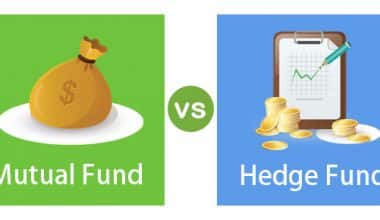Investing in stocks or other asset classes can be a pretty frustrating experience. If you buy too soon, you face the risk of being disappointed if the price declines. However, if you wait and the price rises, you will feel as though you have missed out on a good opportunity. Dollar-cost averaging is a risk-mitigation method that involves gradually increasing your position size. When you use the dollar-cost average, you invest in an asset in equal dollar amounts at regular intervals. You also opt for investing at a variety of prices rather than attempting to time the market. Pretty sleek right? Yea, I thought so too. But then to get a hang of the dollar-cost averaging concept, you’ll need to understand a few things first, especially how it works with a practical example and probably some tools too, like a calculator.
Dollar-cost averaging, like most investment techniques, isn’t for everyone. Plus there are times when it works better than others. However, it can be an effective strategy for overcoming some of the psychological hurdles to investing. Here’s how dollar-cost averaging works, as well as the best methods to use it.
What is the Definition of Dollar Cost Averaging?
Dollar costs average is the strategy of distributing your stocks or other investments into fairly equal sums, buying to a regular interval. This can really create a huge benefit in your stock portfolio. Investing in stocks in times of bears can be especially powerful because it allows people to buy in or buy companies at points at least low most individuals are not afraid to sell.
Committing to this strategy entails investing when there are losses or falling stock prices, as this is when investors can locate the finest deals.
In simpler terms, it is a strategy for building investment holdings by investing equal amounts of money at regular intervals, regardless of the asset’s price or market conditions. This method is known as pound cost averaging in the United Kingdom. For the most part, regular investments might be in the form of a set sum of money or a set number of shares. And the intervals could be weekly, monthly, yearly, or whenever an investor’s investment strategy dictates.
So in literal terms, the dollar cost averaging means using the average of these dollar costs over the set period of time to your advantage.
How Does it Work?
We’ll walk through a hypothetical example to better grasp how dollar cost averaging works. Let’s say you put $200 a month into an index fund for the next five months. Because share values fluctuate at each interval, you’ll get a different number of shares each time you invest $200, as shown below:
| Month | Investment | Share price ($) | Units purchased | Shares total | Total value |
|---|---|---|---|---|---|
| 1 | $200 | 5 | 40 | 40 | $200 |
| 2 | $200 | 3 | 67 | 107 | $321 |
| 3 | $200 | 2 | 100 | 207 | $414 |
| 4 | $200 | 6 | 33 | 240 | $1440 |
| 5 | $200 | 6.5 | 31 | 271 | $1762 |
| Total amount invested= | Average share price= | Total units purchased= | Investment value | P/L | |
| $1000 | $4.50 | 271 | $1762 | $762 |
After five months of making equal monthly contributions, your total investment is $1000. The investment value is $1762 with 271 shares at the end of the period. As a result, you would have made a $378 profit.
It’s crucial to note the difference between the average price per share and the average price per share you pay. The average share price at the conclusion of five months in this DCA (dollar-cost averaging) example was $4.50 ((5+3+2+6+6.5)/5). However, at $3.70 per share ($1000/271 shares), the average price you paid per share was much lower.
Of course, this isn’t to say that employing this method will always provide a profit, or that it will safeguard investors from dropping stock prices.
Dollar Cost Averaging vs. Market Timing
Timing the market is the generic alternative to dollar-cost averaging. It is a technique in which investors try to foresee the stock market’s performance in order to beat it. It is a proactive strategy that focuses on the short term and necessitates constant market monitoring and attention. Some investors choose this strategy because it allows them to achieve above-average profits if they time their investments correctly. It is, nevertheless, impossible to consistently predict the markets accurately.
On the other hand, dollar-cost averaging is a passive investment technique. Because you invest the same amount of money on a regular basis, this technique does not necessitate as much market monitoring. You also construct a position in a stock, bond, or fund rather than entering and quitting separate holdings.
When’s the Best Day to Use DCA?
Many so-called investing experts argue that due to payroll timings and mutual fund flows, there are certain days to deploy money. Don’t be fooled. If there was a secret formula for determining the best day to buy stocks each month, we’d all use it instead of figuring out alternative tactics.
When it comes to dollar-cost averaging, however, you must be careful about the when. You must create and keep to a consistent plan. The strategy’s main advantage is that it allows you to avoid worrying about when to buy in and avoid trying to time the market by breaking the investment into parts. As a result, it’s critical that once you’ve set a date, you adhere to it no matter what.
Let’s imagine you decide to invest $1,000 in an index fund on the first of every month. However, in month four, you see that stocks have been rising for the entire week leading up to the month’s first day. It’s easy to believe that a sell-off is coming at any moment, so you put off buying on the first of the month in the hopes of getting a better deal later. If you do that, a lot of the justification for trying dollar-cost averaging goes into thin air.
Why Might Someone Consider Dollar-Cost Averaging?
If we could buy stocks or other sorts of investments when the market is low and sell when the market is high, that would be fantastic. Unfortunately, attempting to “time the market” frequently backfires, with investors buying and selling at the wrong times.
When stocks fall in value, people become fearful and sell. They may therefore miss out on possible gains if the market rises again. On the other hand, as the stock market rises, investors may be enticed to buy. They may, however, buy just as stocks are ready to fall.
Dollar-cost averaging can help you invest with less emotion. It ensures that you invest the same (or about the same) amount regardless of market swings, potentially preventing you from succumbing to the lure of market timing.
When you dollar-cost average an investment, you buy more shares when the price is low and less shares when the price is high. Over time, you may end up paying a lower average price per share as a result of this.
This can help you limit your losses if the market falls. It works by putting money in gradually rather than all at once.
Why Should You Invest in Mutual Funds?
There may be no better investment vehicle for employing the dollar-cost averaging technique than a no-load mutual fund. The structure of these mutual funds, which can be bought and sold without commission costs, appears to have been intended almost specifically for dollar-cost averaging.
Mutual fund investors pay a fixed proportion of their overall contribution as an expense ratio. That percentage deducts the same amount from a $25 investment or recurring installment payment as it does from a $250 or $2,500 lump-sum payment. The advantage of the fixed-percentage expense ratio is strikingly evident when compared to, say, stock trading, where each transaction is charged a flat commission.
For example, if you put $25 into a mutual fund with a 20 basis-point expense ratio, you’d pay a fee of $0.05, or 0.2 percent. You’d pay $0.50, or 0.2 percent, for a $250 lump-sum investment in the same fund.
If you make a $25 investment with a broker who charges a $10 commission per trade, you will be charged $10, or a 40% fee. A cost of $10.00, or 4%, would be charged on a $250 transaction.
However, an online discount broker would almost probably be less expensive, as they usually charge a flat fee of $4.95 per transaction.
Nonetheless, the availability of no-load mutual funds, which do not charge transaction fees by definition, along with their low minimum investment requirements, allows nearly everyone to invest. Many mutual funds, in fact, waive minimum investment requirements for investors who set up automatic contribution plans, that implement dollar-cost averaging.
So in other words, consider index funds or exchange-traded funds to get the most bang for your buck (ETFs). These funds are passively managed and designed to track the performance of a specific index. And the expenditures are a fraction of a percentage because there are no management fees.
A Long-Term Approach
Dollar-cost averaging is a long-term strategy regardless of the amount you have to invest.
While the financial markets are constantly in flux, most equities tend to move in the same general direction over lengthy periods of time, pushed along by bigger economic currents. A bull or bear market can last for months or even years. As a result, dollar-cost averaging loses its appeal as a short-term strategy.
Furthermore, mutual funds and even individual equities do not, on average, fluctuate significantly in value from month to month. To appreciate the whole advantage of dollar-cost averaging, you must keep your investment going during both good and bad times. Your assets will reflect the premium prices of a bull market as well as the discounts of a bear market over time.
What are some of the drawbacks of Dollar-Cost Averaging?
Before you start dollar-cost averaging, there are a few things to think about. For one, it’s hard to know whether stock values will rise or fall on any given day, week, or year. However, there is a century of data to prove that markets do grow over time.
You can prevent short-term volatility by keeping the majority of your money out of the market and only buying in little amounts at a time. However, this implies that some of your money is sitting idle, not contributing to your net worth.
If you’re focusing on dividend stocks and other income-generating investments, this is a particularly significant risk. Dividend payers continue to distribute dividends in both good and poor markets, with the exception of extreme instances. You miss out on dividends on the percentage of your capital that hasn’t yet been invested if you employ dollar-cost averaging to gradually establish a stake in a dividend stock.
Finally, keep in mind that any investment strategy is only as good as the stocks you choose to invest in. Dollar-cost averaging can help calm nerves and is preferable to trying to time the markets, but there is no substitute for investing in high-quality firms.
Is Dollar-Cost Averaging the Best Strategy For You?
Dollar-cost averaging is advantageous because it reduces investor concern, eliminates the need to time the market, and provides a consistent, disciplined strategy to grow your savings. If you’re interested, there are a few simple things to take:
- Determine how much money you wish to put in: It could be a one-time windfall that you want to invest, or a specific sum that you want to contribute on a regular basis indefinitely.
- Decide how frequently you’d like to invest: It could be daily, weekly, monthly, or any other interval you wish since trading commissions are almost non-existent.
- Decide how long you want to spread the investment out over: It could happen a few times or it could be the start of a long-term habit.
- Determine the amount of money to be invested at each interval: Divide the amount by the number of periods if it’s a lump sum. Budget how much you can reliably afford if it’s an indefinite investing plan.
Meanwhile, no matter what the markets do on a given day or week, stick to the strategy. There is really no one-size-fits-all approach to investing. Dollar-cost averaging can be an excellent strategy to expand your portfolio if you’re an investor trying to enhance your net worth but are concerned about being tempted to time the market, or if you’re committed to investing a little bit each month regardless of recent stock performance.
Dollar-Cost Averaging Calculator
A dollar-cost averaging calculator is a tool that makes the whole process of calculating potential outcomes easier. Starting from the specified start date they simulate making purchases on a recurring basis over the duration of the accumulation period. And for each simulated purchase they reference the historical price of the intended asset to know the exact profits you would have acquired at that time.
So, in general, a dollar-cost averaging calculator makes your work easier by giving all the information you would need to pick the desired asset and plan more effectively. There are a couple of options out there, each of them with unique features and sometimes, with a price tag. So make your research and pick one that suits your taste, and investment priorities.
A pretty good example of a dollar-cost averaging calculator is the DCABTC. Meanwhile, there are other pretty better options at your disposal.
Does Dollar Cost Averaging Really Work?
Dollar-cost averaging outperformed lump-sum investing about a third of the time. Because it’s hard to forecast future market dips, dollar cost averaging provides steady returns while lowering the chance of falling into one of the 33.33 percent of lump-sum investing failures. So, yes, dollar-cost averaging works, B=but then that doesn’t make it foolproof.
What Are the 2 Drawbacks to Dollar-Cost Averaging?
Dollar-cost averaging has some downsides, like missing out on higher long-term returns and not being able to solve all other investing risks.
Is Dollar Cost Averaging the Best?
Whether dollar-cost averaging is the best or not is relative. In other words, for some investors, this is the best strategy for others, not so much. But generally, considering that there are tons of investors/traders out there without a strategy, dollar-cost averaging is one of the best ways to build one.
Is DCA a Good Strategy?
DCA is a pretty good strategy for tons of investors out there that fly blindly into the market. Although it works best in bear markets, it’s better than nothing.
Why Dollar-Cost Averaging Is a Bad Idea?
The fact that the market tends to rise over time is a drawback of dollar-cost averaging. This indicates that investing a large sum of money upfront will likely outperform investing lesser amounts over time. And because of the market’s upward trend, the lump sum will deliver a superior long-term return.







